Two Expert Buxus Growers Explain How To Care For Box Hedgerows And Topiary
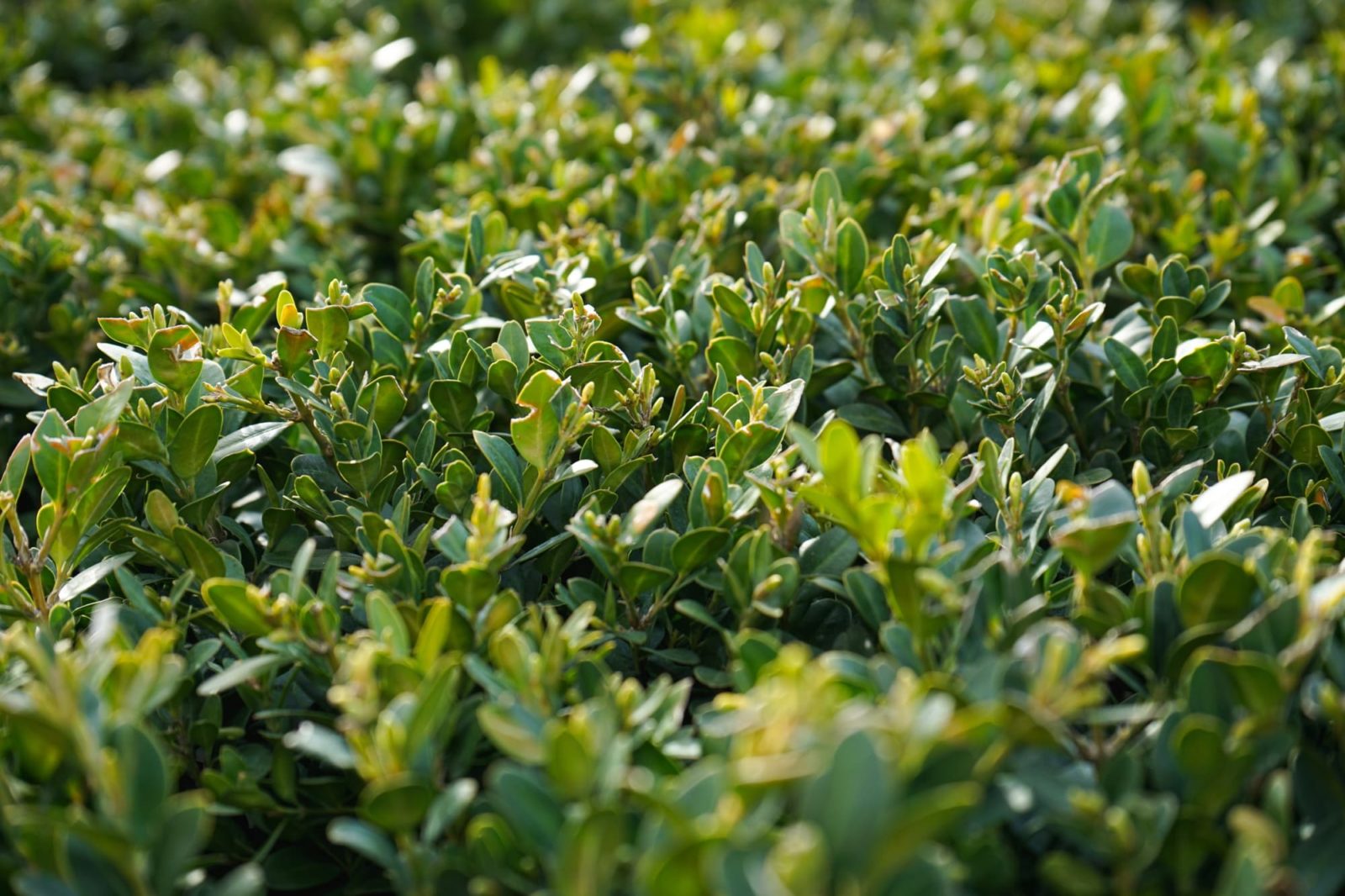
HEDGING > BOX

Elizabeth is a Permaculture Garden Designer, Sustainability Consultant and Professional Writer, working as an advocate for positive change. She graduated from the University of St. Andrews with an MA in English and Philosophy and obtained a Diploma in Applied Permaculture Design from the Permaculture Association.
Reviewed By DAN ORI

Dan has over 27 years’ under his belt caring for plants and gardens. Working as a Horticultural Instructor and Consultant, he draws on a diverse range of experience that includes working as a Head Gardener, Tree Surgeon, Garden Centre Trouble Shooter, and writer of academic papers. Dan has a Level 3 Diploma in Horticulture and is currently a candidate for the RHS’s most prestigious award – The Master of Horticulture.
Contributions From BILL IRVING

Bill is the Director of Boxtrees Nursery, a specialist online retailer in Suffolk specialising in hedging and topiary plants including Buxus, Taxus, Ilex and more.

Topiary Artist based in the UK who is a member of the European Boxwood and Topiary Society and is the founder of Modern Mint. Having worked all over the UK and in New York, Darren has been featured in articles by The Guardian and has featured in Garden Masterclass videos on YouTube. He is also currently writing a book entitled ‘Modern Topiary’.

Now Head Gardener at Fulham Palace Gardens, Lucy Hart began her horticultural career at the age of just 13, when she worked at her local nursery. She has since worked at Kew Royal Botanic Gardens as Team Leader Horticultural Trainer and Manager for 8 years, before moving to Fulham Palace, a position she has held since 2011.
BOXWOOD GUIDES
Box is commonly used for neatly clipped hedgerows and topiary in the UK and is ubiquitous in some areas.
However, there is good reason for its popularity, so in spite of its commonness, you may still find plenty of reasons to choose this popular plant.
In this guide, we’ve worked with two Buxus experts who offer their top tips and tricks to help you successfully grow and care for box in your garden:
- Bill Irving – Director at Boxtrees Nursery.
- Darren Lerigo – Topiary Artist from Modern Mint.
“There is nothing else like growing box,” says Darren.
“The leaves are small, so you can get beautiful detail into any shape you clip them into, whether it is a classical, straight-edged plinth with a ball on top – or something serpentine and modern you might see in an Arne Maynard garden.”
Overview
| Botanical Name | Buxus sempervirens |
| Common Name(s) | Common Box, Boxwood |
| Plant Type | Shrub / Hedging |
| Native Area | West and South Europe, Northwest and Southwest Africa |
| Hardiness Rating | H6 |
| Foliage | Evergreen |
| Flowers | Pale yellow, insignificant |
| When To Plant | Best in autumn or spring |
| When To Prune | Summer |
Sunlight
Preferred
Full Shade or Part Shade
Exposure
Exposed or Sheltered
Size
Height
4 -8M
Spread
4 -8M
Bloom Time
April to May
Soil
Preferred
Most fertile soils
Moisture
Moist but well-drained
pH
Any
Common box, Buxus sempervirens, is native to the southern reaches of England and is the only plant within its genus that is native to anywhere in the British Isles.1Trees and shrubs: native to Britain. (n.d.). Royal Horticultural Society. Retrieved April 3, 2023, from https://www.rhs.org.uk/plants/types/trees/native-tree-shrubs
Box is a common sight in many British gardens, where it is used for neatly clipped hedging and topiary forms.
“Box trees are also great for wildlife, providing winter cover for garden birds and hedgehogs and are an important food source for bees early in the growing season,” says Bill.
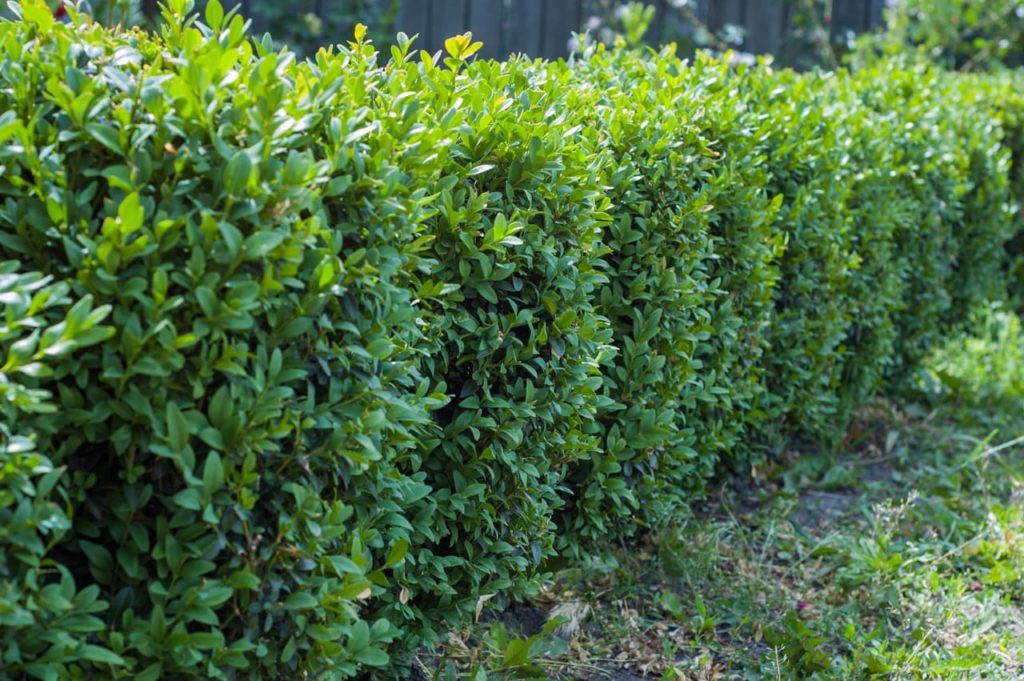
Unfortunately, while popular, Box is a shrub that can be susceptible to certain issues.
The most problematic of these is box blight.
This is a fungal infection that spreads easily and is just one of several fungal issues that can plague this plant.2Calonectria pseudonaviculata (Buxus blight). (2022). CABI Compendium. https://doi.org/10.1079/cabicompendium.17414
Boxwood shrubs can also be susceptible to insect infestations by box caterpillars.
Commonly Grown Types
Most box grown in the UK is B. sempervirens, though other Buxus are sometimes also grown, such as B. microphylla.
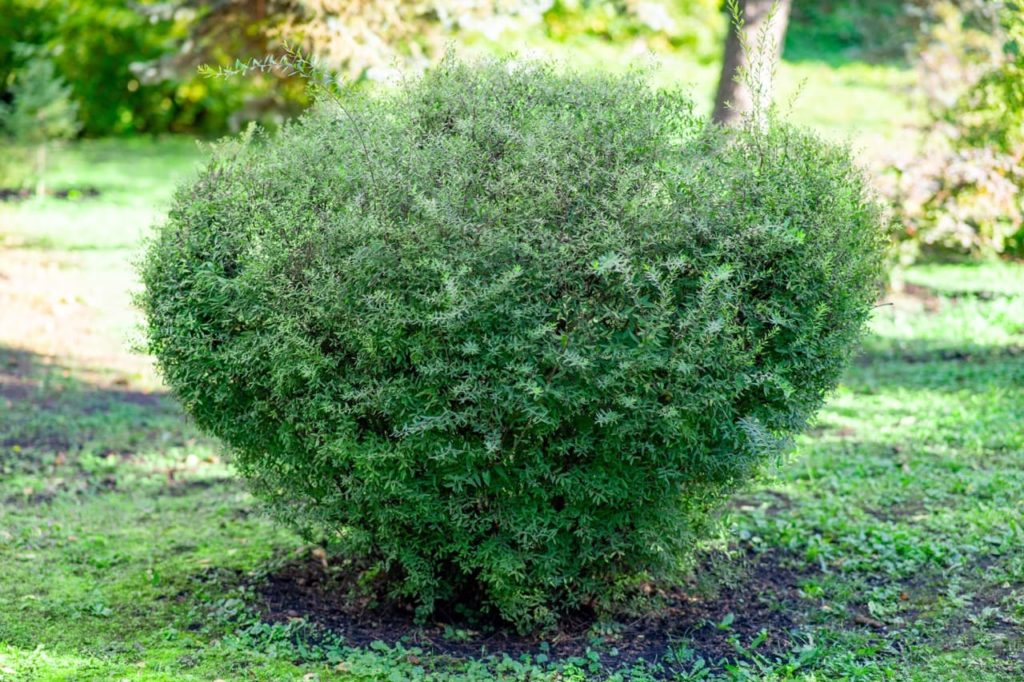
Where box blight is a serious issue, B. microphylla is said to be somewhat less susceptible to this problem.
“Look at some more unusual varieties like B. myrtifolia, which is so slow-growing, but looks lovely against gravel or a low wall,” shares Darren.
“If you are worried about box blight, you could look at using the new hybrid varieties that are tolerant of the disease and another advantage is that the box tree caterpillar doesn’t seem to like them as much as Buxus sempervirens.”
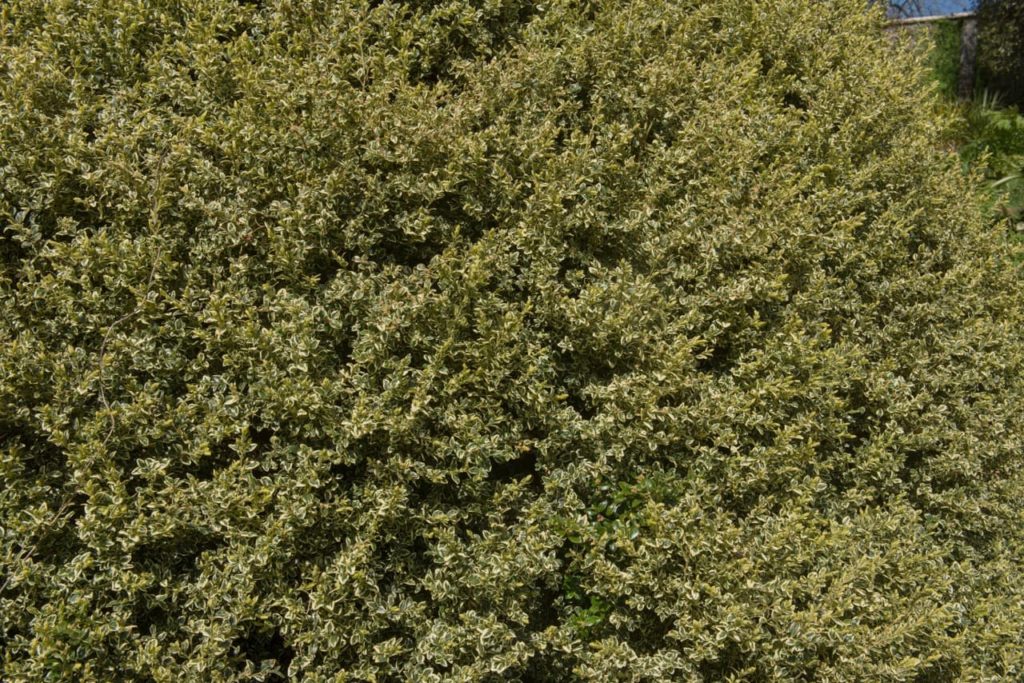
Some common box cultivars that are highly regarded include:
- B. sempervirens ‘Graham Blandy’ (AGM)
- B. sempervirens ‘Latifolia Maculata’ (AGM)
- B. sempervirens ‘Elegantissima’ (AGM)
- B. sempervirens ‘Suffruticosa’
- B. microphylla ‘Faulkner’ (AGM)
Of course, there are a number of other named cultivars to choose from.
How To Grow Buxus
Box is very easy to grow and care for in a garden, but the amount of upkeep required will depend on how and where you are using it.
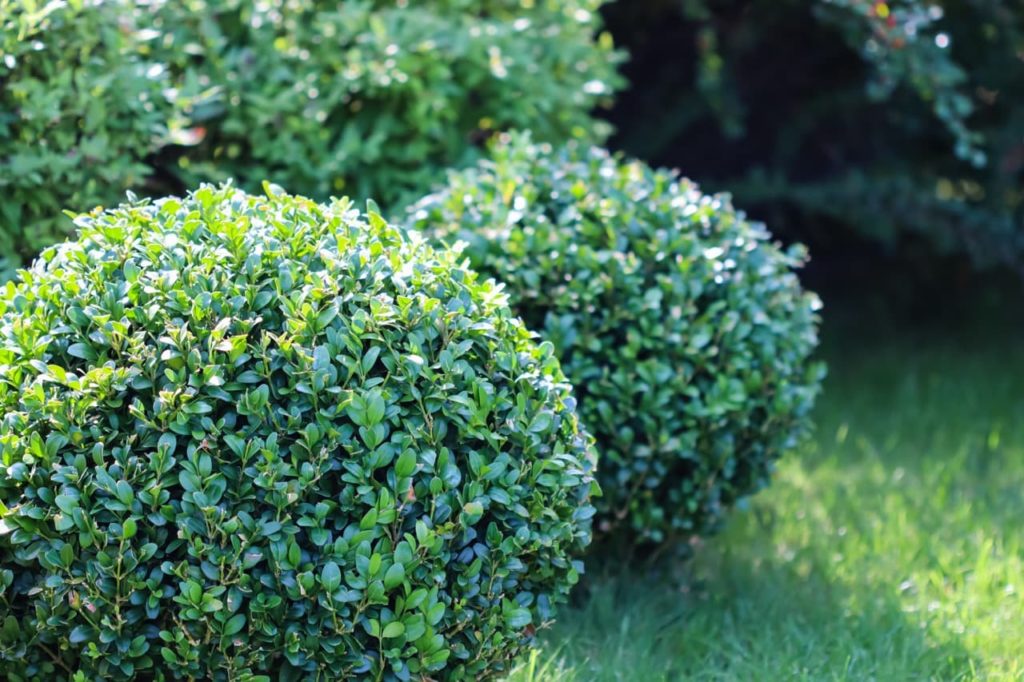
For example, neatly clipped hedging and topiary forms can take much more upkeep than when you’re growing box in a more natural shape and form.
Preferred Site
Boxwood shrubs need a site in full sun or partial shade.
They will typically do best in a location with morning sun where they are sheltered from the heat at the height of the day, especially in warmer, more southerly areas.

“Place them by doorways or gates or use them as waymarkers or punctuation points around the garden,” says Darren.
“They can also amplify the end of a border or can change the atmosphere completely if used in just the right spot and clipped just the right way.”
Soil Requirements
Box requires soil that is moist yet free draining or free-draining.

These plants cannot tolerate remaining in a waterlogged situation and this is one of the most important factors in determining where they will grow well.
Box shrubs thrive when in neutral to very mildly acidic soil, though they can be tolerant of a range of pH levels and can be grown successfully in many different soils.
Planting Buxus
If you have decided that you would like to plant some box in your garden, you will need to think about where and how you will integrate the plants into your garden design before you source the plants or consider how to grow them.
You can purchase bare root box for a hedge or when you need a larger number.
This is a more affordable way of buying box than purchasing plants in pots.
However, where you want a stand-alone specimen or want a jump start on a topiary form, you can purchase a pot-grown plant and perhaps one already cultivated and pruned into a specific shape.
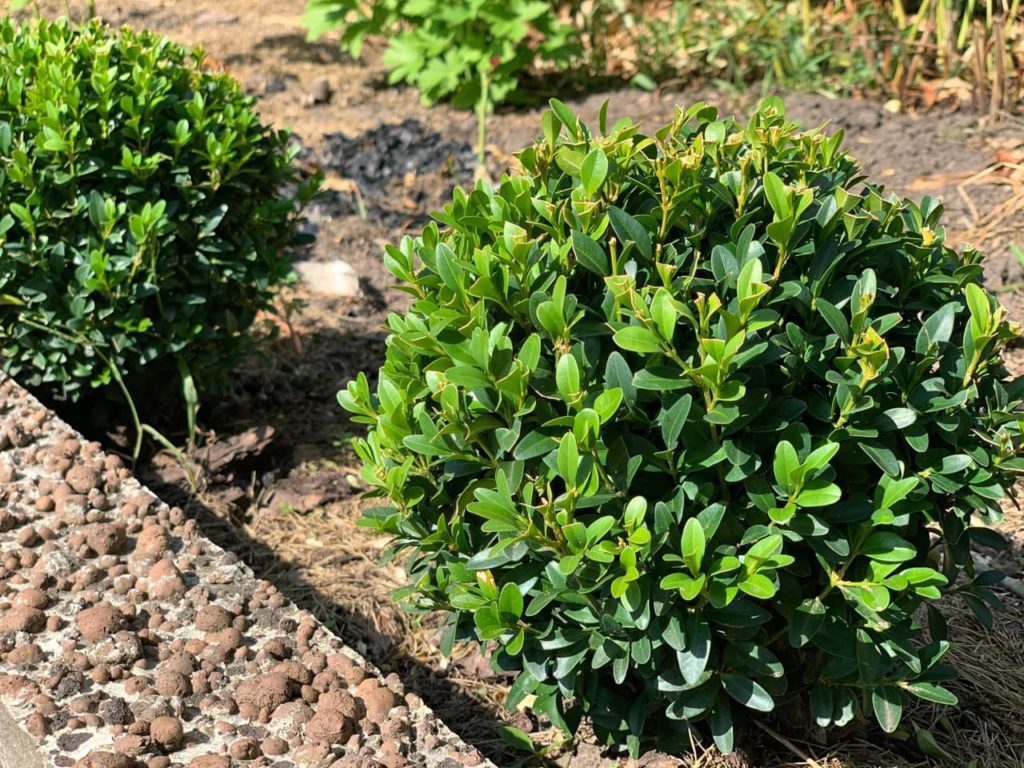
The latter option can be purchased at any time, while bare root plants are available throughout the colder half of the year.
However, the best times to plant out new box is either in spring or autumn, when the conditions make it a little easier for the plants to establish themselves successfully.
Plant box just as you would any other shrub or hedging plant in your garden.
“When planting, mound up the soil so that the plant’s root crown is about 50mm above the surrounding soil level,” Darren recommends.
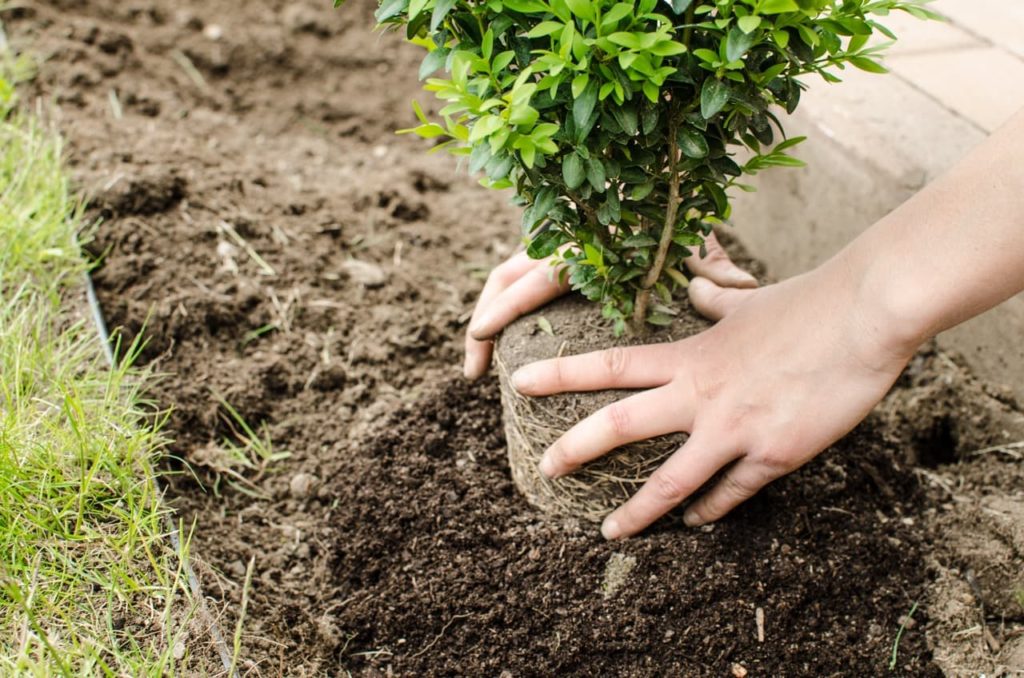
First, prepare the area.
Make sure you have amended the soil with plenty of organic matter to improve drainage and soil structure.
Next, determine spacing.
For box hedging, a spacing of around 5 plants per metre is generally recommended, though this may be varied somewhat depending on the specific type and your goals.

Box makes great hedging, but remember that closer spacing is required for these hedging plants than for some others, as box is relatively slow-growing.
Once you have determined the right spacing, dig planting holes or a trench following the hedge line if you are planting a greater number of plants.
Place the new box plants into these planting holes or trenches and firm the soil back around each one.
After planting, be sure to water the new additions in well and then mulch around the base of the plants with organic matter, such as homemade compost or leaf mould.
Ongoing Box Care
The key thing when growing box is to make sure that you choose the right location for planting in the first place.
If you have found a spot suited to the environmental conditions that box requires, then you should find it an easy and hassle-free plant to grow.
Light
As mentioned above, box can grow in full sun or partial shade.
If you are growing a type with leaf variegation, you will usually find that colours are more vibrant in full sun, though most box will also be happy in partial or dappled shade.
“The leaves of box reflect light,” explains Darren.
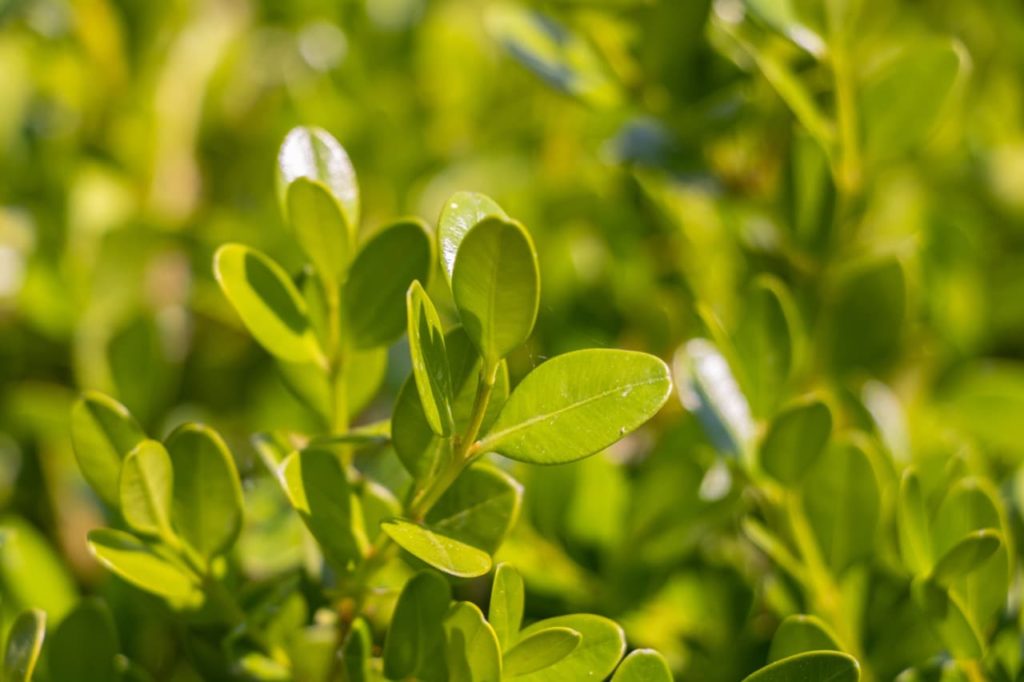
“In Britain the sunlight can be quite weak, so it’s useful to have evergreen leaves that bounce the sunshine back around the garden.
“Where the sunlight doesn’t hit a leaf, you get a shadow, which adds texture to your topiary or hedge.
“It’s really worth thinking a lot about how the sunlight moves and is filtered around your garden space, as boxwood helps with that enormously, giving you scope to play with light and shade.”
Watering
Box will typically need to be kept well-watered from planting through to establishment, especially if the weather is very dry.
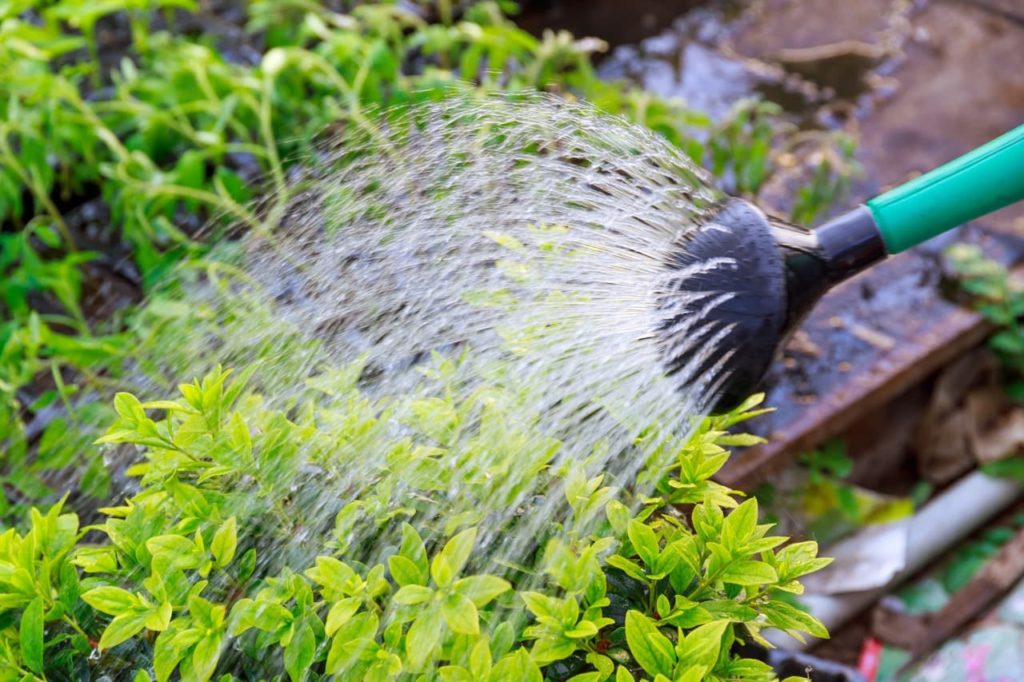
However, once established, box will survive with natural rainfall and will only require watering or irrigation during prolonged periods of drought or particularly warm weather.
Propagating
If you have existing box and would like to propagate more, you might consider growing box from cuttings.
It is very easy to propagate box by taking semi-ripe cuttings in early to mid-summer.
The process can be very quick and it will take only around 2 months for cuttings to root with bottom heat or in a heated propagator.
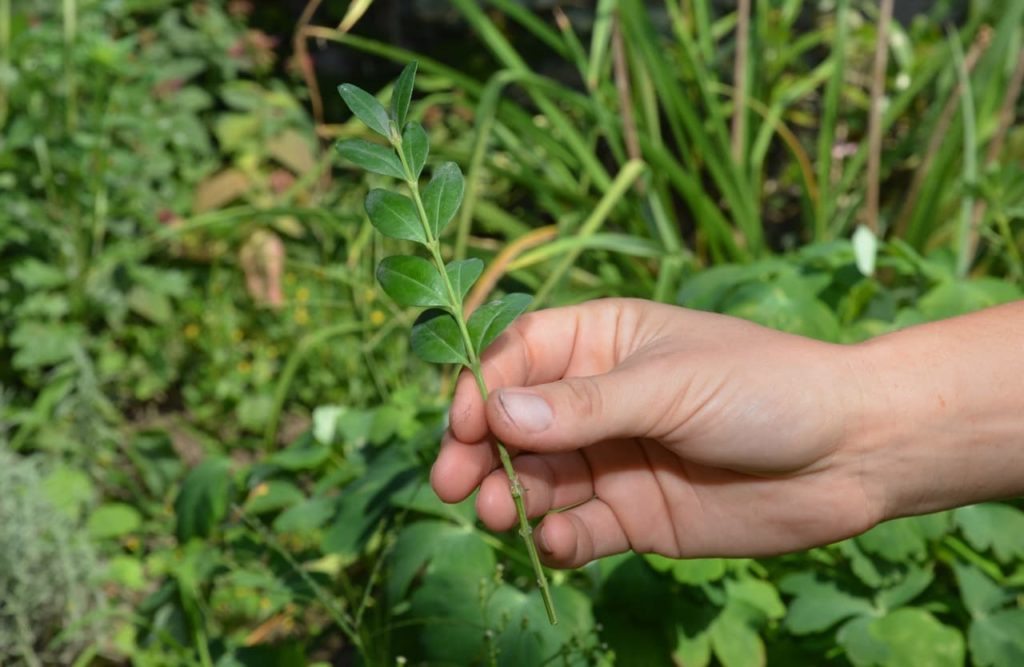
However, without heat in a cold frame, polytunnel or unheated greenhouse, it can take around 8 months for the cuttings to be well-rooted.
Cuttings can potentially also root well in a year or so when simply planted in the ground in a moist and partially shaded spot.
Once the cuttings root, you can encourage bushy growth by regularly pinching out the shoot tips.
It will typically take 3-4 years before plants grown from cuttings are ready to be planted out into their final growing positions.
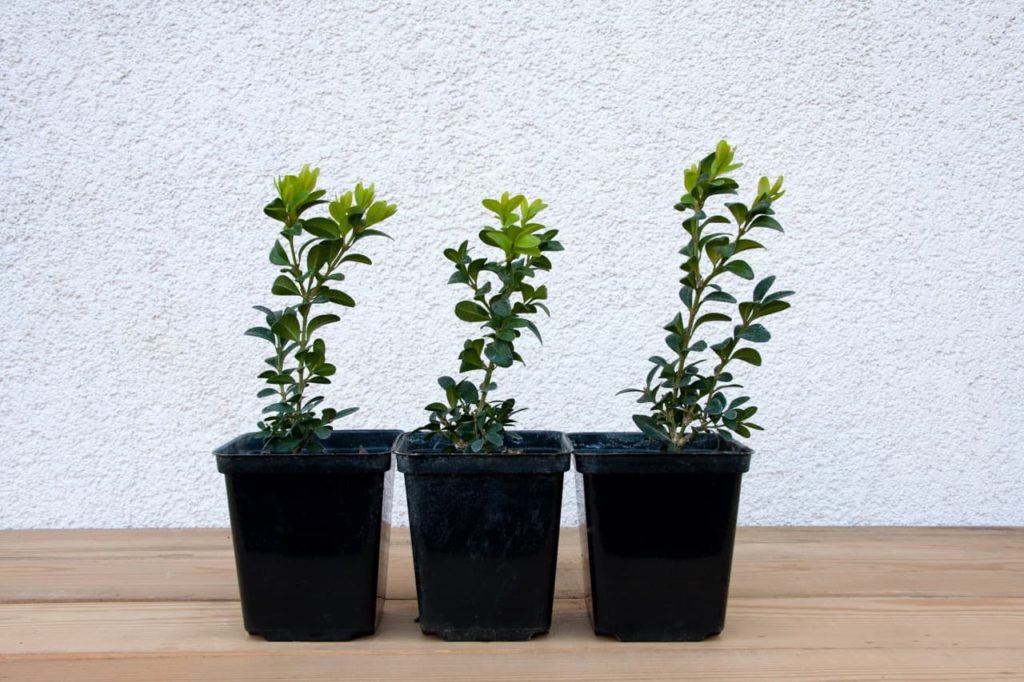
Growing from seed takes a little longer and it will be around 5 years before your new plants are ready to go into their final growing positions in the garden.
However, this is also a relatively straightforward process.
Seeds should be sown in autumn or early spring into small pots and placed in a cold frame or other covered space to germinate and grow.
It is important to make sure that you don’t let the young plants dry out.
Common Problems
Unfortunately, as mentioned earlier in this guide, the downside to growing box is that it is prone to a number of disease and pest problems.
Of these common problems, box blight is perhaps the best-known and most alarming.
Sadly, this problem is prevalent in many parts of the British Isles.3Box blight: managing outbreaks. (n.d.). Royal Horticultural Society. Retrieved April 3, 2023, from https://www.rhs.org.uk/prevention-protection/box-blight-managing-outbreaks
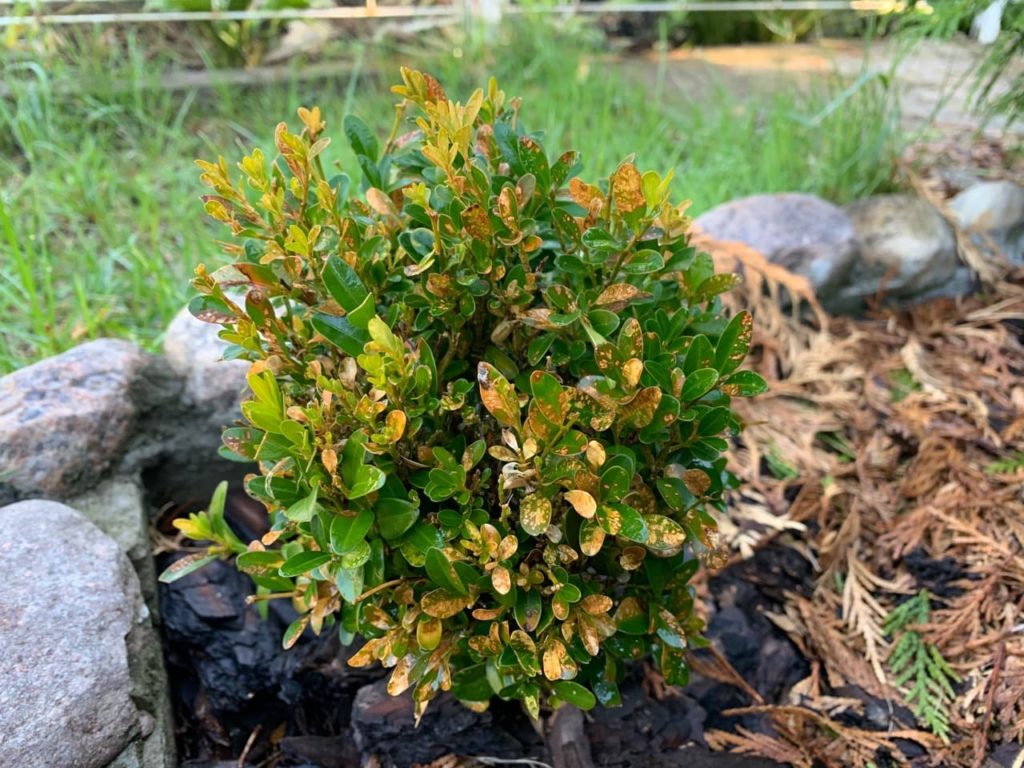
“Clean your tools, as this way you prevent blight from spreading if you have it,” says Darren.
As well as box blight (which we have covered in detail in a separate guide) there are also other problems to which box can succumb, including other fungal problems.
“If box blight is rampant in your area, it may be worth considering an alternative species,” shares Master Horticulturist Dan Ori.
“The best alternative will depend on the soil and climate you have, so some homework and consideration is needed.”
“Our box tree is not looking well at the moment due to the box caterpillar and drought is also really affecting our trees at the moment,” shares Lucy Hart, the Head Gardener at Fulham Palace Gardens.
Box tree caterpillar is one of the most serious pests for these plants and these are unfortunately also common in many parts of the UK.
“Look out for the boxwood caterpillar, especially in March, then take steps to predate it, as we don’t have the natural predators to do it for us here in the UK,” warns Darren.
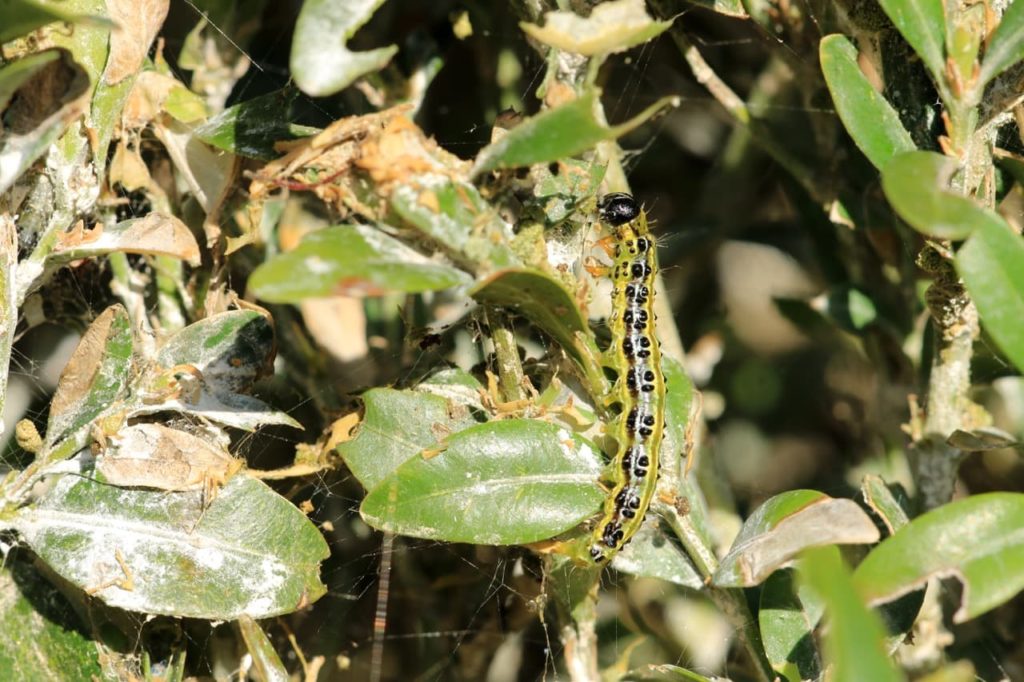
“Regular hand-picking is an option if you only have a couple of topiaries, but if you have lots, you will need to spray carefully with a product that controls caterpillars.
“Make sure you read the instructions and spray when other garden beneficials aren’t around in the early morning or in the evening.”
“Experiment with creative combinations of small-leaved evergreens,” says Bill.
“There are many other plants that work well with Buxus and more diversity of plants within a garden will help minimise the impact of problems with plant health.”
References
- 1Trees and shrubs: native to Britain. (n.d.). Royal Horticultural Society. Retrieved April 3, 2023, from https://www.rhs.org.uk/plants/types/trees/native-tree-shrubs
- 2Calonectria pseudonaviculata (Buxus blight). (2022). CABI Compendium. https://doi.org/10.1079/cabicompendium.17414
- 3Box blight: managing outbreaks. (n.d.). Royal Horticultural Society. Retrieved April 3, 2023, from https://www.rhs.org.uk/prevention-protection/box-blight-managing-outbreaks
